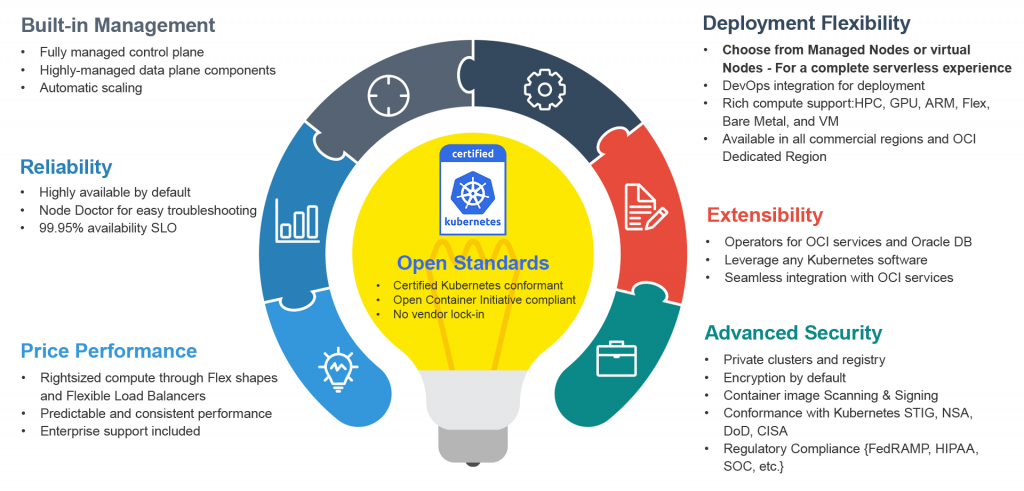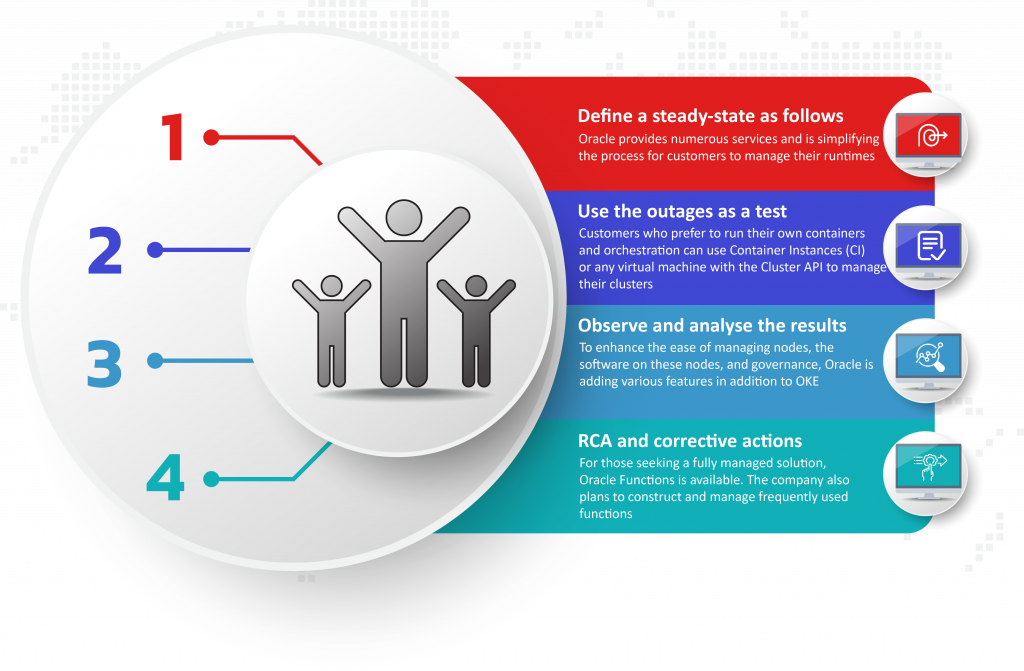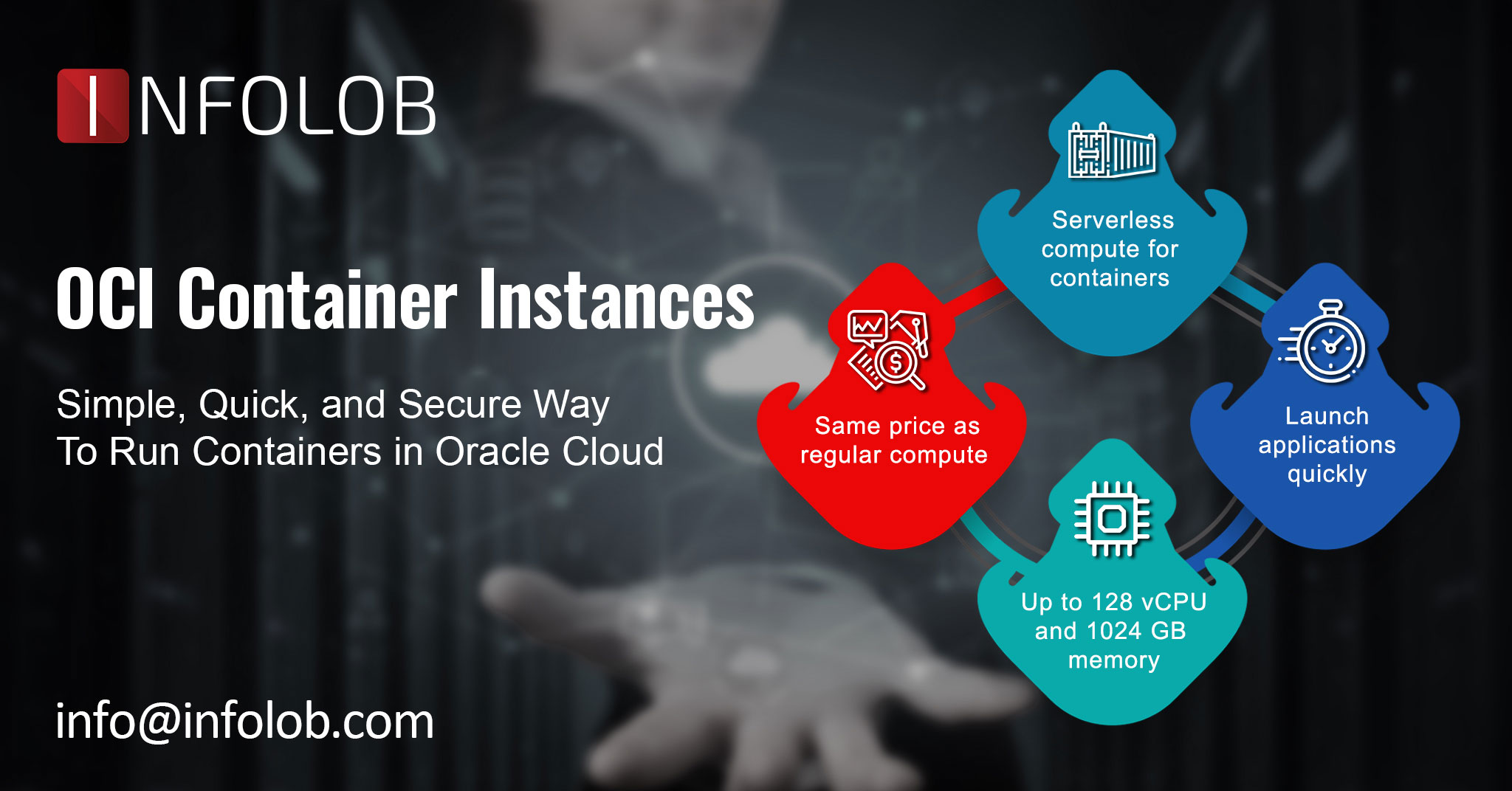Containers are already the dominant ways of packaging, sharing, and deploying applications. Now, for the next phase of componentization, businesses are witnessing a tremendous urge to adopt containers with Container Engine for Kubernetes (OKE). It is because many companies still struggle with the complexities of operating container workloads and Kubernetes clusters while also being burdened by the management of underlying infrastructure.
With the release of Container Instances and Virtual Nodes, Oracle takes a much-awaited shot at the persisting containerization challenges – dramatically streamlining containerization and Kubernetes in Oracle Cloud. Let us find out how Oracle plans to change the game for businesses signing up for containerization with OKE – further assisted by the new Container Instances and Virtual Nodes.
‘Whats’ and ‘Whys’ of Oracle Container Engine for Kubernetes
First things first, Oracle offers OKE – a managed Kubernetes service in Oracle Cloud Infrastructure (OCI), to run Kubernetes workloads. OKE manages the execution of pods on both managed nodes and virtual nodes. The managed nodes, which are OCI Compute instances, are controlled through the OKE API and can be configured in alignment with customers’ needs.

Below are some of the reasons in-depth why modern businesses use OKE for containerization.
Adherence to Open Standards:
Oracle utilizes open standards for container orchestration, runtime, and image registry, offering container management solutions that enable effortless workload mobility and avoid vendor lock-in. OKE has been certified as Kubernetes conformant by the Cloud Native Compute Foundation (CNCF). Additionally, the container runtime and integrated image registry comply with the Open Container Initiative standards.
High Performance & Low Cost:
OKE, built on OCI, offers better performance at a lower cost than competitors due to OCI’s modern cloud architecture and lack of over-subscription of resources. With a dedicated CPU core and no management fees, OKE is more cost-effective than EKS, AWS, and Azure. Free enterprise support and up to 10TB of free data transfer per month also make it an attractive option. Customers can also adjust compute resources and load balancers to fit their needs.
Industry-dominating Security:
OCI, with security as a key focus, integrates with OKE to provide comprehensive security measures such as private clusters, robust access management, encryption, and vulnerability scanning. OKE also meets various industry standards and government guidelines for secure workloads.
Embedded Management:
Oracle fully manages the OKE control plane and offers automatic scaling.
Built-in Reliability:
OKE automatically ensures high availability for Kubernetes clusters, scaling the control plane as needed. Worker nodes self-heal if accidentally removed, and come with diagnostic tools for troubleshooting.
Deployment Flexibility:
OKE offers DevOps services for Blue-Green/Canary deployment and supports Helm charts. It can run on different architectures and be deployed globally or on-premises through Dedicated Region.
Extensibility:
Customers can interact with other OCI services and Oracle databases and use 3rd party software with OKE through operators.
What are Container Instances and Virtual Nodes in OKE?
Container Instances and Virtual Nodes in Oracle Container Engine for Kubernetes are a major step in the direction of further modernizing packaging, sharing, and deployment of applications. To start with the Container Instances – they provide an easy, fast, and secure option to run containers minus the hassle of any infrastructure management.
With Virtual Nodes, on the other hand, customers can run containerized applications at scale without having to worry about the operational tasks of managing, scaling, upgrading, and troubleshooting the node infrastructure. This delivers a pure serverless Kubernetes experience.
The Impact of Container Instances on Containerization
Container Instances offer optimized serverless computing for running containers with improved security through strong workload isolation. They offer a faster startup time compared to running containers on self-managed virtual machines. You can run even the most resource-intensive container workloads without encountering CPU and memory limitations, as you have the ability to allocate the maximum CPU and memory supported by the underlying shape. Additionally, with Container Instances, you only pay for the CPU and memory used at the same price as Compute, providing a cost-effective solution without additional charges for the serverless experience. This means you no longer have to sacrifice cost savings for running containers on virtual machines.
Key Features Embedded in OKE with the Inclusion of Container Instances and Virtual Nodes
With Serverless Compute, there’s no need to manage servers:
- Choose your preferred compute shape; E4/E3 Flex is available at GA with plans to add more options
- Specify the desired amount of CPU and memory resources
- Allocate all of the resources provided by the shape to support demanding applications
- Enjoy 15 GB of ephemeral storage at no extra cost
Experience a simple, fast, and flexible solution:
- Launch with ease using the Console, CLI, API, or Terraform
- Run one or more containers per instance
- Pull images from OCIR or any external registry
- Optionally configure settings such as graceful shutdown, restart policy, environment variables, startup options, resource throttling, and more
Stay secure with built-in networking and observability features:
- Enjoy strong isolation with no sharing of the kernel or resources across instances.
- Secure communication through VCN with the option to assign a public IP.
- Use IAM access control with resource principal.
- Take advantage of embedded metrics.
- View logs in the console or pull them using the API.
Oracle’s Considerations Entailing Container Instances and Virtual Nodes in OKE

- Oracle provides numerous services and is simplifying the process for customers to manage their runtimes
- Customers who prefer to run their own containers and orchestration can use Container Instances (CI) or any virtual machine with the Cluster API to manage their clusters
- To enhance the ease of managing nodes, the software on these nodes, and governance, Oracle is adding various features in addition to OKE
- For those seeking a fully managed solution, Oracle Functions is available. The company also plans to construct and manage frequently used functions
We are the go-to expert Oracle Partner for hundreds of organizations leveraging breakthrough technologies – recently honored by Oracle with the title of Globe’s Top 5 and APAC’s #1 Game Changer Tech Service Delivery Partner (2022).
For all Digital Transformation Solutions & IT Managed Services, contact us:





